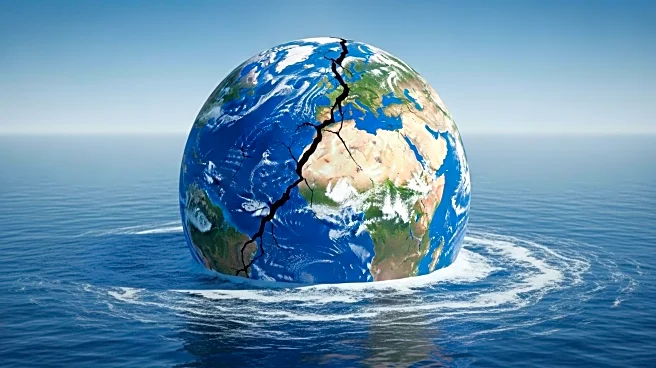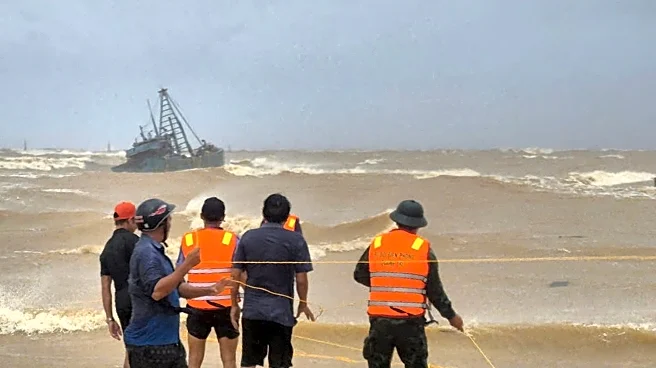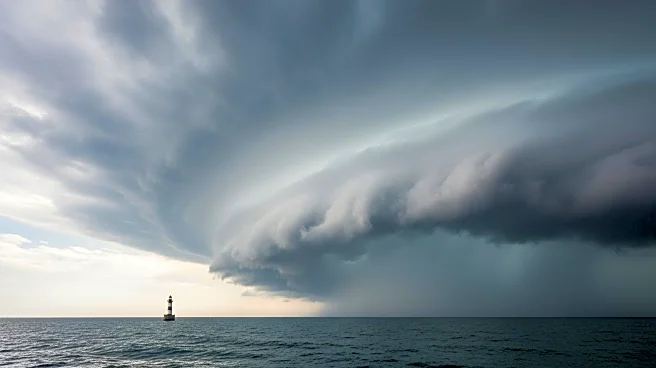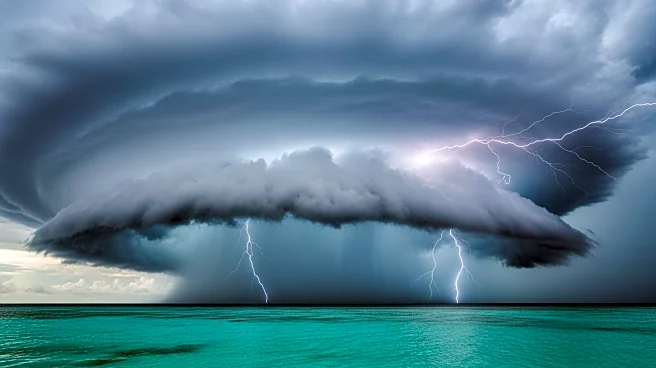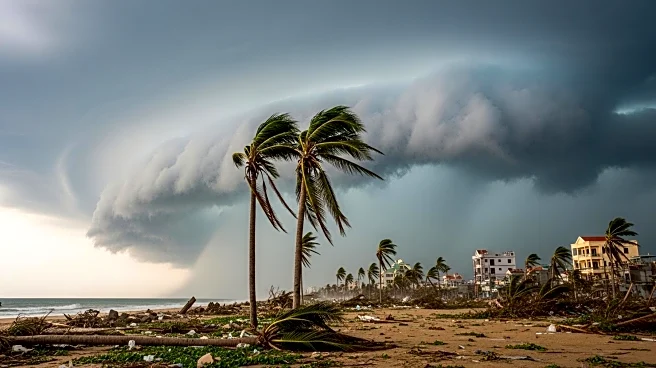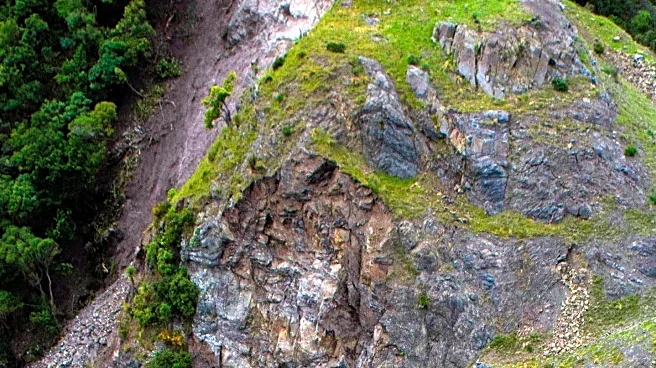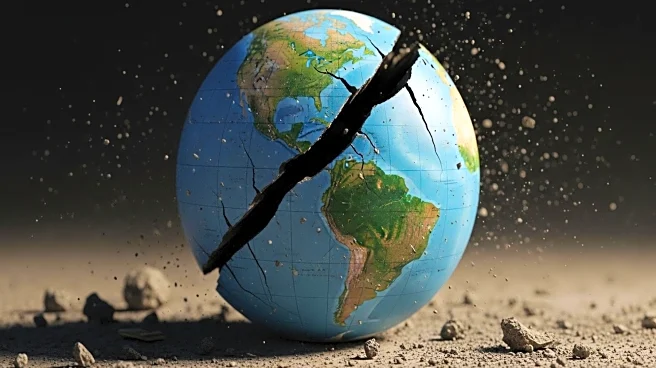What is the story about?
What's Happening?
A powerful 6.9 magnitude earthquake struck the central Philippines near Calape, Bohol province, just before 10 p.m. local time on Tuesday. The epicenter was located approximately seven miles east-southeast of Calape, at a shallow depth of around six miles, which increases the likelihood of strong shaking on land. The region, known for its tourist attractions such as the Chocolate Hills and white-sand beaches, is now under assessment for potential damage and aftershocks. Authorities have confirmed that there is no tsunami threat at this time.
Why It's Important?
The earthquake's impact on the central Philippines, a region that includes major metropolitan areas like Cebu City, could have significant implications for local infrastructure and tourism. The Philippines is situated along the seismically active boundaries of the Philippine Sea Plate, making it prone to earthquakes and tsunamis. Past events, such as the 1976 Moro Gulf earthquake and the 1990 Luzon earthquake, have resulted in substantial loss of life and property. The current earthquake underscores the ongoing risk faced by the region and the importance of preparedness and rapid response to natural disasters.
What's Next?
Authorities are currently assessing the damage and monitoring for aftershocks. The response from local and national agencies will be crucial in addressing any immediate needs and ensuring the safety of residents and tourists. The situation may prompt discussions on improving infrastructure resilience and emergency response strategies in earthquake-prone areas.
AI Generated Content
Do you find this article useful?
